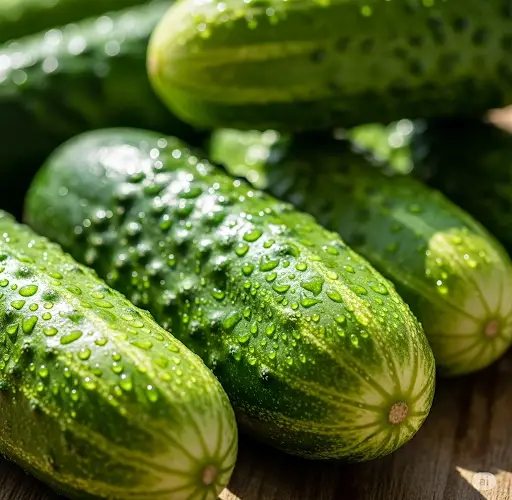If you’ve ever watched your vegetable plants grow tall and leafy but refuse to produce fruit, you know how frustrating it can be. You’ve watered them, given them sun, and waited patiently—but no tomatoes, no cucumbers, no peppers. The good news? A simple, natural liquid fertilizer may be all your plants need to shift into high gear and start producing.
Incredibly, after applying just half a liter of this homemade tonic to each plant, my cucumbers, tomatoes, and peppers began fruiting almost immediately. The results were visible within days—tiny cucumbers swelling on vines, tomatoes beginning to blush, and peppers forming where only flowers had been before.
The secret isn’t in expensive store-bought fertilizers or harsh chemicals. It’s a gentle, organic mix you can make at home using simple kitchen and garden scraps.
Why Vegetables Stall Before Fruiting
Vegetable plants often grow healthy leaves and stems first before moving on to flowering and fruiting. However, they can get “stuck” in this growth phase due to:
-
Excess nitrogen from standard fertilizers, which encourages foliage instead of fruit
-
Nutrient imbalance, particularly a lack of potassium and phosphorus
-
Stress from irregular watering or poor soil life
-
Low microbial activity in the soil, which affects nutrient uptake
To solve this, your plants need a nudge in the right direction—a signal that it’s time to focus on reproduction and fruiting.
The Fertilizer That Jumpstarts Fruiting
This natural liquid feed provides just that. It’s a fermented plant tonic rich in:
-
Phosphorus – Promotes flower and fruit development
-
Potassium – Enhances fruit size, taste, and resilience
-
Calcium and magnesium – Strengthen plant tissues and prevent issues like blossom end rot
-
Beneficial microbes – Help roots absorb nutrients more efficiently
After just one treatment with half a liter per plant, the effects become quickly noticeable.
How to Make the Fertilizer at Home
Here’s a simple recipe that yields enough to feed multiple plants:
Ingredients:
-
1 overripe banana (or banana peel)
-
1 tablespoon of wood ash or eggshell powder
-
A handful of fresh grass clippings or nettle
-
1 tablespoon of sugar (or old jam/honey)
-
2 liters of non-chlorinated water
Instructions:
-
Blend or Chop: Combine the banana, ash or eggshells, and plant matter in a bucket or bottle. You can chop or blend them for faster breakdown.
-
Add Sugar and Water: Mix in the sugar and fill the container with water.
-
Ferment: Let the mixture sit in a warm spot for 3–5 days. Stir once daily to activate fermentation. A slight fizz or sour smell indicates it’s ready.
-
Dilute Before Use: Before applying, strain the liquid and dilute it with clean water in a 1:5 ratio (one part tonic to five parts water).
How to Apply
Pour half a liter of the diluted mixture at the base of each plant—tomatoes, cucumbers, and peppers alike. For best results, apply in the early morning or late afternoon, once a week.
The first time you apply, you may see flowers begin to set within days. Within a week or two, small fruits should appear. Repeating this every 7–10 days will keep your plants nourished and productive throughout the season.
Supporting Tips for Maximum Fruiting
To make the most of your fertilizer, combine it with smart gardening habits:
-
Pinch off early flowers on weak plants to allow roots to strengthen first.
-
Mulch around your plants to maintain moisture and regulate soil temperature.
-
Provide support for vines and tall stems to reduce stress.
-
Remove yellowing or diseased leaves to redirect energy toward healthy growth and fruiting.
-
Ensure adequate sun exposure—at least 6–8 hours a day for fruit-bearing vegetables.
The Results: A Garden Transformed
Within two weeks of applying the tonic, my once-flowering-but-barren plants were full of tiny fruits. Cucumbers began forming in clusters, tomatoes turned from green to red rapidly, and peppers grew full and shiny. What was most surprising was how quickly everything changed after just half a liter of this natural blend per plant.
It wasn’t a miracle product from a store, but a homemade, nutrient-rich solution that rebalanced the soil and gave the plants exactly what they needed, when they needed it.
Conclusion
If your cucumbers, tomatoes, or peppers are growing but not fruiting, don’t give up. Often, all they need is a boost in the right nutrients and soil vitality. With a little effort and a simple fermented fertilizer, your vegetable garden can go from disappointing to abundant—fast.
Try this method once and you’ll likely make it a permanent part of your gardening routine. The ingredients are simple, the preparation is easy, and the results speak for themselves. Half a liter might just be the secret to your best harvest yet.



